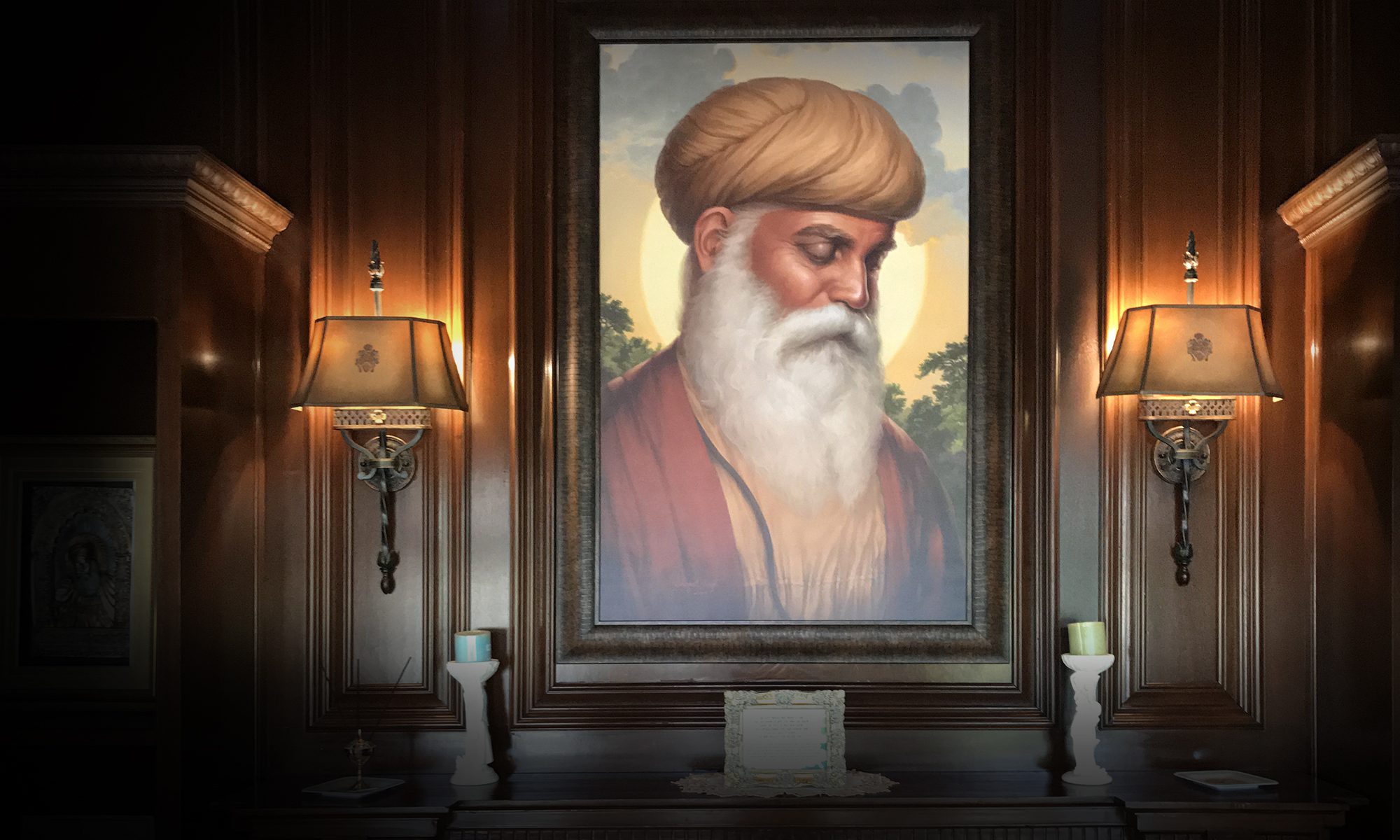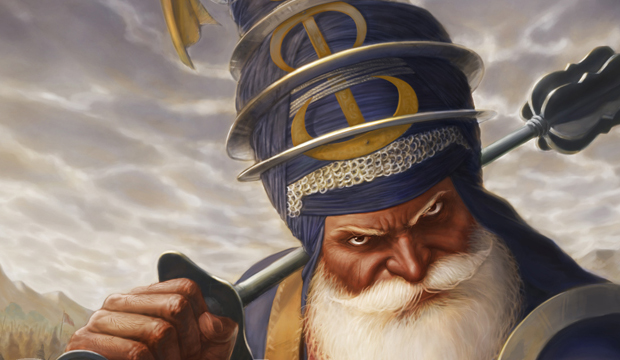“Only those warriors are brave, who kill their inner enemy, their ego.”
– Guru Amar Das ji (Guru Granth Sahib, 86)

Order Your Prints Now
$59.99 – $2499.99Select options This product has multiple variants. The options may be chosen on the product page
| Premium Gloss Canvas | Cost | Enhanced Matte Paper | Cost |
| Small (22″ x 16″) | $299 | Small (22″ x 16″) | $59 |
| Medium (32″ x 24″) | $399 | Ultrasmooth Fine Art Paper | Cost |
| Large (48″ x 35″) | $599 | Medium (32″ x 24″) | $199 |
| Grand (60″ x 44″) | $899 | Large (48″ x 35″) | $399 |
| Unique (75″ x 55″) | $2499 | – | – |
*Your Premium Canvases are carefully hand-stretched around thick wooden bars to hold them taught. Hanging bits are included so that your canvas is ready to hang as soon as you receive it!
Artist’s Notes


Akali Phula Singh was employed by Ranjit Singh after his attack on Thomas Metcalfe’s escort at Amritsar in 1809. He commanded a force called Changari, “Sparks”. These were essentially mounted infantry; their horses were only for transport. During Maharaja Ranjit Singh’s rule, Akalis were recorded to still wear their traditional blue dresses, and their more modern, tall, conical turbans. They carried their own weapons including chakars, swords and pistols, in great numbers. Under Phula Singh’s leadership, and perhaps earlier, Akalis were a terror to friends and foes alike. They led a nomadic lifestyle, travelling in bands, and depending on charity or sometimes force for their sustenance.
Akalis were known for speaking their minds and their daredevil courage. They were strictly against the European training of Ranjit Singh’s regular army (they even disapproved of his tolerance of the British), and insisted on pursuing traditional Sikh tactics. Their extreme bravery on battlefield was pivotal in the Sikh victories at Multan in 1818 and Naushehra in 1823. However, such employment reduced their numbers significantly.
Akalis along with other Sikh forces, fought the Battle of Naushehra with the Afghan tribes of Yusufzai, Khattaks and Affridi. Prince Sher Singh and Hari Singh Nalwa led the advance. Ranjit Singh and Akali Phula Singh were to attack at a strategic point in battle. After pushing back the tribesman, Akali Phula Singh fell victim to their muskets. The Akalis lost a great general but came out victorious in this battle.

Akali Phula Singh carries a wide array of weapons including Tulwar, Khanda, Chakar, Khanjar and Katar, while wielding a Gurj, Indian mace. He is wearing the tall Dastaar Boonga, which literally translates into Turban Tower. It is decorated with and somewhat supported by a gold Chand Tora. Behind him one can see the Changari force, waiting for that strategic moment, at Naushehra. Their turbans are stacked with Chakars, which they will volley across the battlefield towards incoming armies. Although, everyone is mounted on a horse, they will unmount just before the charge into battle.


